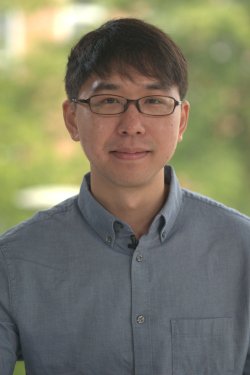Xiaoming Zhao
2021 Regional Award Finalist — Post-Doc

Current Position:
Postdoctoral Research Associate
Institution:
Princeton University
Discipline:
Chemical Engineering

Current Position:
Postdoctoral Research Associate
Institution:
Princeton University
Discipline:
Chemical Engineering
Recognized for: Chemical engineer, Xiaoming Zhao, is spearheading new efforts to design and manufacture solar cells out of alternative materials known as “perovskites” that may be cheaper and more easily produced than current silicon-based technology. By developing a processing method to combine layered perovskites with carbon-based semiconductors, he has built so-called “hybrid” two-dimensional perovskite solar cells with record-breaking efficiency and high stability after long-term use. Zhao is now working to eliminate toxic chemicals from his solar cells, preparing them for commercialization.
Areas of Research Interest and Expertise: Chemical Engineering, Materials Chemistry, Nanofabrication, Energy Conversion
Previous Positions:
BS, Tianjin University, China
MS, Tianjin University, China
PhD, Queen Mary University of London, UK (Advisor: Prof. John Dennis)
Research Summary:
Xiaoming Zhao, PhD, is creating new synthesis and processing techniques for a class of materials known as “perovskites,” making them more commercially viable as solar cell materials. Perovskites are one of the most common crystals on Earth, and when made out of ions such as cesium, lead, and iodine, they can be constructed into solar cells. Zhao has made several critical discoveries that dramatically improve the performance of perovskite solar cells (PSCs). Building on previous technical experience with organic semiconductors, Zhao developed hybrid PSCs that incorporate perovskites with organic molecules. This combination increases the different colors of light that can be absorbed by the PSCs, increasing the total energy captured. Zhao has transformed his research program and the entire field with this simple idea, achieving dramatically improved PSC performance on multiple fronts: hybrid PSCs are more efficient because they can absorb more energy from light, and the incorporation of organic molecules has made the PSCs more stable.
Zhao has also made massive improvements to the processing of PSCs. He has developed a method to synthesize highly-oriented layered perovskites for solar cells that improves on the stability of three-dimensional perovskites. In 2020, the PSCs synthesized by Zhao set a world-record for two-dimensional PSC efficiency. Zhao is now investigating ways to remove toxic chemicals like lead from PSCs, so they can be more safely produced and recycled. Zhao’s discoveries facilitate the transition of this promising photovoltaic technology from the laboratory to the market.
"Solar energy technology is one of the most promising solutions to minimizing our dependence on fossil fuels to meet the net-zero emission goal. I hope my work on perovskite solar cells can contribute to a new energy landscape to replace fossil fuels."
Key Publications:
Other Honors:
| 2018 | Best Poster Award, Spring Meeting, Materials Research Society |
| 2017 | Summer Internship Award, ExxonMobile Asia-Pacific R&D Center |
| 2016 | Top Five Entries of HiSTAR Innovation & ENtrepreneurship Competition, HiTECH Innovation |
| 2015-2018 | QMUL-CSC Scholarship for Graduate Students, Queen Mary University of London |
In the Media:
SciTechDaily – Cheaper Renewable Energy by Fine-Tuning Thermoelectric Materials
ChemistryViews – Organic Semiconductor Makes Perovskite Solar Cells More Efficient